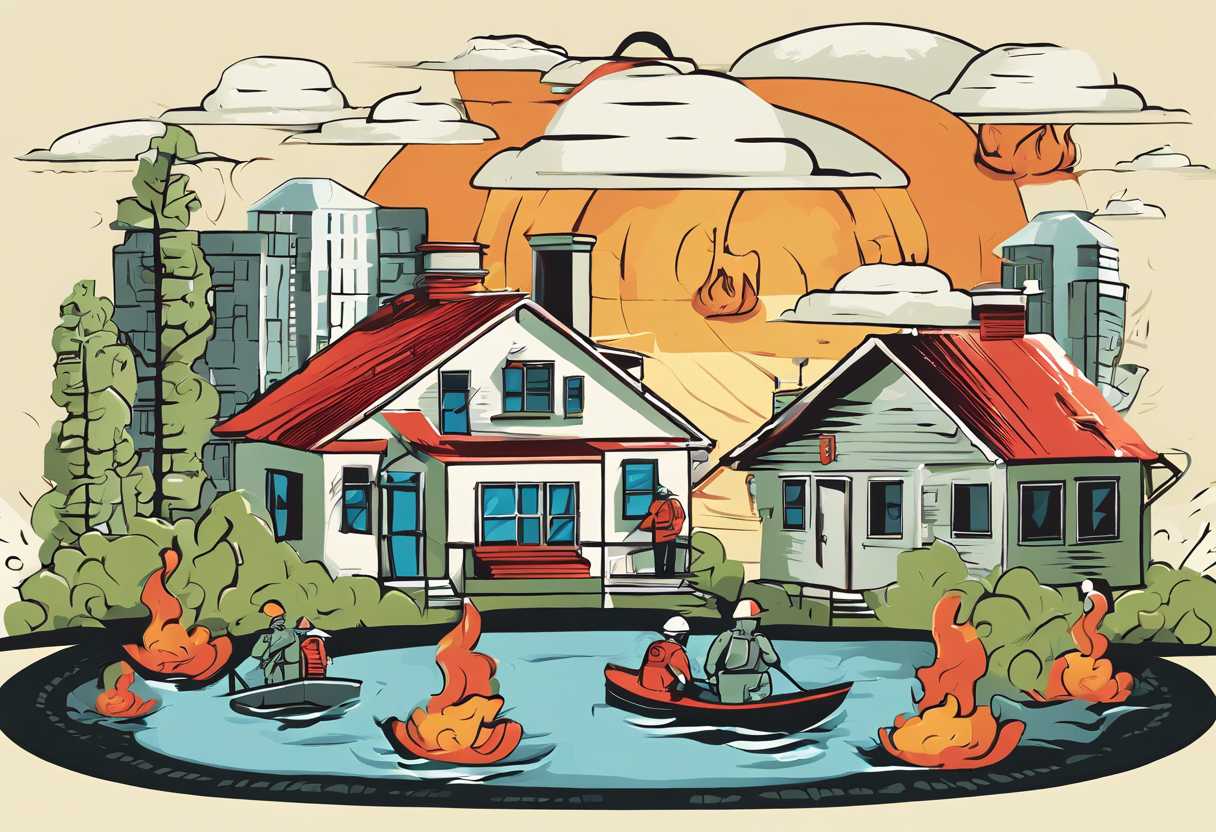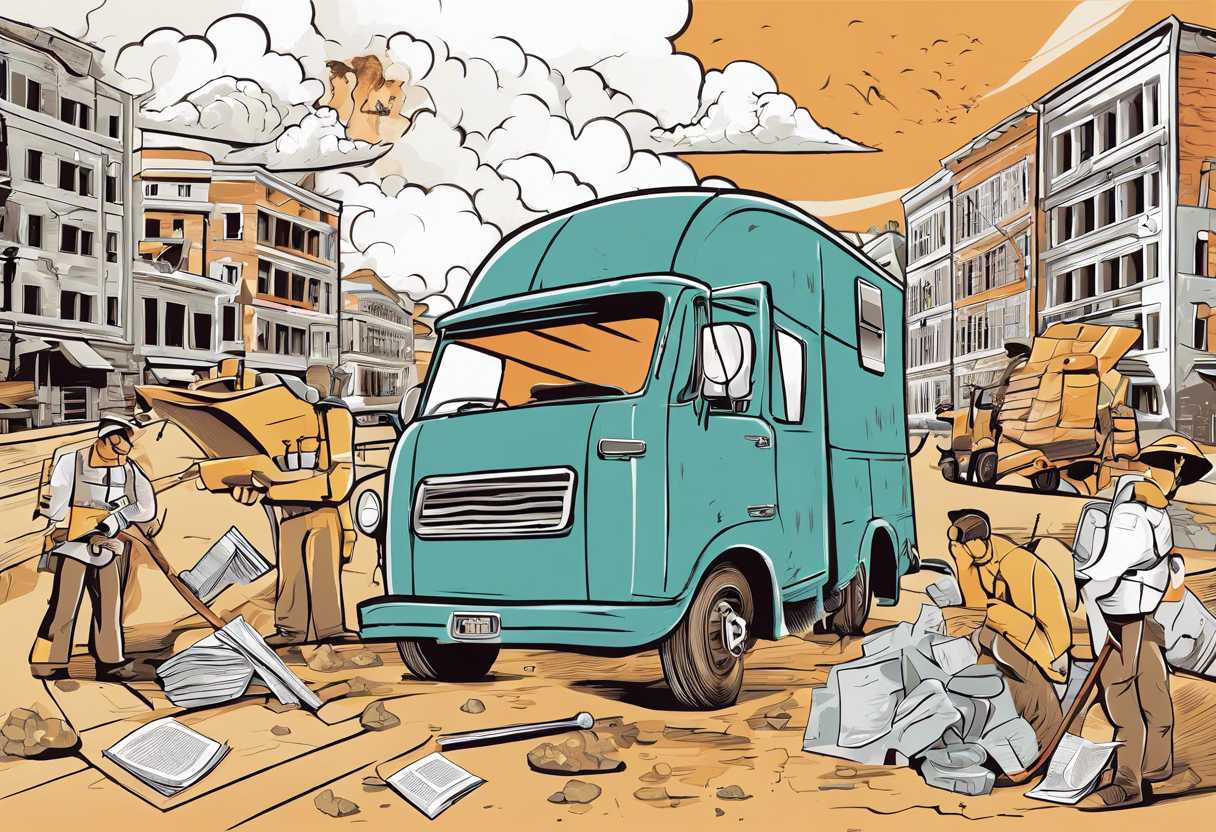Disasters can strike at any time, causing widespread devastation and leaving communities and individuals in a state of vulnerability. Understanding the impact of disasters on both a local and global scale is crucial in order to effectively mitigate their effects. By identifying vulnerabilities and risk factors in disaster-prone areas, we can develop more targeted and efficient disaster preparedness and response strategies. This not only helps to minimize the impact of disasters but also promotes resilience and recovery in the face of adversity. Collaboration is key in creating sustainable solutions to mitigate disaster risk, as it allows for a more comprehensive and effective approach. In this blog post, we will delve into the importance of learning about disasters and disaster risk, and how it can lead to a more secure and resilient future for all.
Understanding the Impact of Disasters on Communities and Individuals
The Psychological Impact
Disasters can have a profound psychological impact on both individuals and communities. The trauma of experiencing a disaster can lead to a range of mental health issues, including anxiety, depression, and post-traumatic stress disorder. *It is important for communities to provide access to mental health resources and support services to help individuals cope with the emotional aftermath of a disaster.*
The Economic Impact
Disasters can also have a significant economic impact on communities. The destruction of infrastructure, homes, and businesses can lead to a loss of income and increased financial strain. *Communities may need to implement economic recovery plans and provide financial assistance to help individuals and businesses rebuild and recover from the financial impact of a disaster.*
The Social Impact
Disasters can disrupt social networks and community cohesion, leading to feelings of isolation and disconnection. *It is important for communities to come together and support one another in the aftermath of a disaster, fostering a sense of unity and solidarity.*

Identifying Vulnerabilities and Risk Factors in Disaster-Prone Areas
Understanding the Geographic and Environmental Factors
When it comes to identifying vulnerabilities and risk factors in disaster-prone areas, it’s crucial to understand the geographic and environmental factors at play. This includes analyzing the topography, soil composition, and proximity to bodies of water. Areas located in low-lying regions or near fault lines are more susceptible to flooding and earthquakes, while those with dense vegetation may be at risk for wildfires. By examining these factors, we can better assess the potential hazards that a community may face.
Evaluating Infrastructure and Building Standards
Another key aspect of identifying vulnerabilities in disaster-prone areas is evaluating the infrastructure and building standards in place. Older structures may not be built to withstand the impact of natural disasters, putting residents at greater risk. Additionally, inadequate drainage systems and poorly constructed roads can exacerbate the effects of flooding. By assessing the quality of infrastructure and building standards, we can determine the level of vulnerability within a community and take steps to mitigate potential risks.
Assessing Socio-Economic and Demographic Factors
It’s also important to consider the socio-economic and demographic factors that contribute to vulnerability in disaster-prone areas. Low-income communities may lack access to resources and support systems needed to prepare for and recover from disasters. Additionally, densely populated areas may face greater challenges in evacuating residents during emergencies. By assessing these factors, we can develop targeted strategies to address the specific needs of at-risk populations and improve overall resilience.

Developing Effective Disaster Preparedness and Response Strategies
The Importance of Disaster Preparedness
Disasters can strike at any time, and being prepared is crucial for minimizing their impact. Developing effective disaster preparedness strategies involves assessing potential risks, creating emergency plans, and ensuring that resources and personnel are in place to respond swiftly and effectively. By investing in preparedness, organizations can reduce the potential for loss of life, property damage, and disruption to operations.
Key Components of Effective Disaster Response
When a disaster occurs, a well-planned and coordinated response is essential. This involves having clear communication channels, designated roles and responsibilities, and access to necessary resources such as medical supplies, food, and shelter. Additionally, training and drills are important for ensuring that personnel are familiar with response protocols and can act quickly and decisively in a crisis.
Utilizing Technology for Disaster Management
Advancements in technology have revolutionized disaster preparedness and response efforts. Geographic Information Systems (GIS) can be used to map out vulnerable areas and plan evacuation routes, while social media and mobile apps can be powerful tools for disseminating information and coordinating relief efforts. Drones and satellite imagery also play a crucial role in assessing damage and identifying areas in need of assistance.
Promoting Resilience and Recovery in the Face of Disasters
Building Community Resilience
Community resilience is the ability of a community to withstand, recover, and learn from disasters. It involves the collective capacity of individuals and organizations to adapt and thrive in the face of adversity. Building community resilience requires a multi-faceted approach, including:
- Developing strong social networks and support systems
- Investing in infrastructure and resources that can withstand disasters
- Implementing effective communication and coordination strategies
Supporting Mental and Emotional Recovery
Disasters can have a profound impact on the mental and emotional well-being of individuals and communities. It is crucial to provide support and resources to help people cope with the aftermath of a disaster. This can include:
- Access to mental health services and counseling
- Creating safe spaces for people to share their experiences and emotions
- Offering education and training on coping strategies and resilience-building
Utilizing Data and Technology for Disaster Response
Data and technology play a crucial role in disaster response and recovery efforts. By leveraging the power of data and technology, organizations and communities can:
- Identify vulnerable populations and areas at risk of disasters
- Coordinate and mobilize resources more effectively
- Monitor and assess the impact of disasters in real-time
| Data and Technology | Benefits |
| Geospatial mapping | Identifying vulnerable areas and populations |
| Mobile apps | Facilitating communication and resource distribution |
Collaborating for Sustainable Solutions to Mitigate Disaster Risk
The Importance of Collaboration in Disaster Risk Mitigation
Collaboration is essential in addressing the complex challenges posed by disaster risk. By bringing together diverse stakeholders, including government agencies, non-profit organizations, and private sector entities, we can leverage a wide range of expertise and resources to develop sustainable solutions. This collaborative approach allows for the sharing of best practices, the pooling of resources, and the development of comprehensive strategies that address the root causes of disaster risk.
Building Resilient Communities through Collaboration
One of the key benefits of collaboration in disaster risk mitigation is the ability to build resilient communities. By working together, stakeholders can identify vulnerabilities, develop early warning systems, and implement measures to strengthen infrastructure and improve preparedness. This not only reduces the impact of disasters but also helps communities recover more quickly in their aftermath. Collaboration also fosters a sense of shared responsibility, empowering communities to take an active role in their own safety and well-being.
Case Study: Collaborative Disaster Risk Mitigation Efforts in Action
In a recent study conducted by the United Nations, it was found that communities that engaged in collaborative disaster risk mitigation efforts experienced a 30% reduction in disaster-related losses. This was achieved through a combination of community-led initiatives, government support, and private sector investment. By working together, these stakeholders were able to identify and address vulnerabilities, implement early warning systems, and improve infrastructure, ultimately reducing the impact of disasters on the community.
| Collaborative Efforts | Reduction in Disaster-Related Losses |
| Community-led initiatives | 15% |
| Government support | 10% |
| Private sector investment | 5% |
By leveraging the strengths of each stakeholder, these collaborative efforts were able to significantly mitigate disaster risk and build a more resilient community.
Conclusion
Understanding the impact of disasters on communities and individuals is crucial for creating effective disaster risk management plans. By identifying vulnerabilities and risk factors in disaster-prone areas, we can develop targeted strategies to minimize the impact of disasters and protect those most at risk. It is essential to prioritize disaster preparedness and response to ensure a swift and effective reaction when disaster strikes. Promoting resilience and recovery in the face of disasters is key to helping communities bounce back and thrive in the aftermath. Collaboration is vital for sustainable solutions to mitigate disaster risk, as it takes a collective effort to build a safer and more resilient future.
As we continue to learn about disaster and disaster risk, it is important to take action and apply this knowledge to create positive change. Whether it’s through supporting local disaster relief efforts, advocating for policy changes, or participating in community preparedness initiatives, each of us has a role to play in building a safer and more resilient world. By working together and staying informed, we can make a meaningful difference in reducing the impact of disasters and protecting our communities.
Thank you for joining us on this journey to understand the importance of learning about disaster and disaster risk. Let’s continue to work towards a safer, more resilient future for all.

